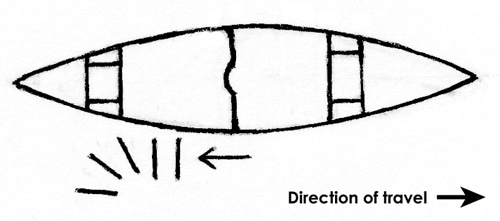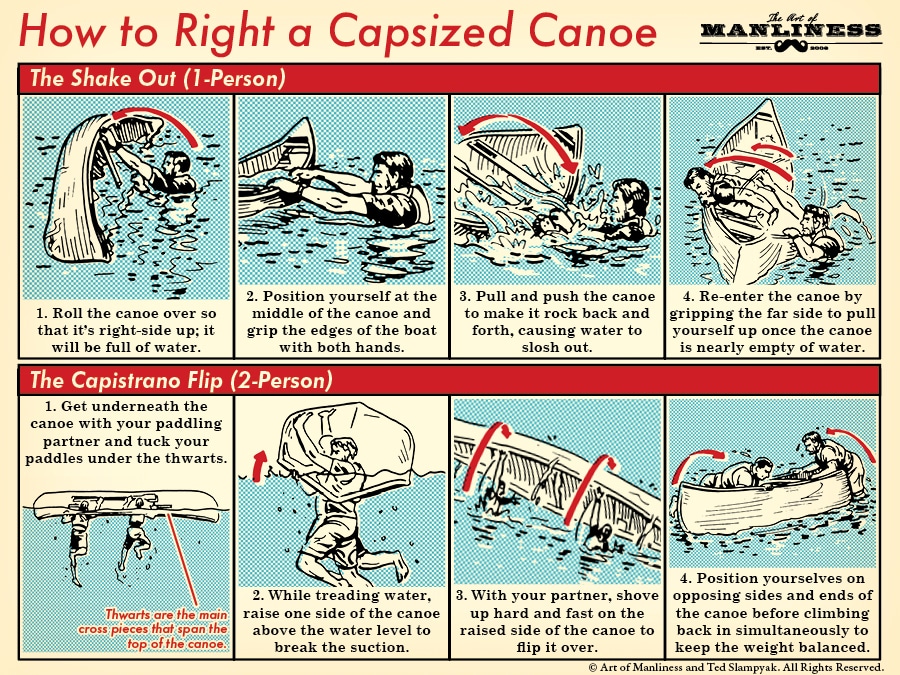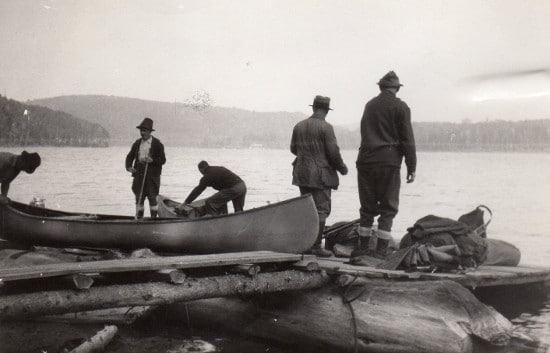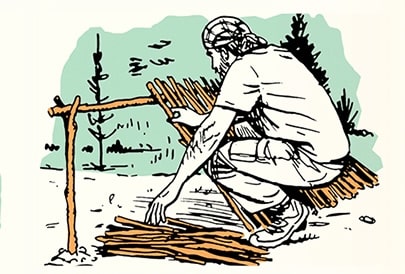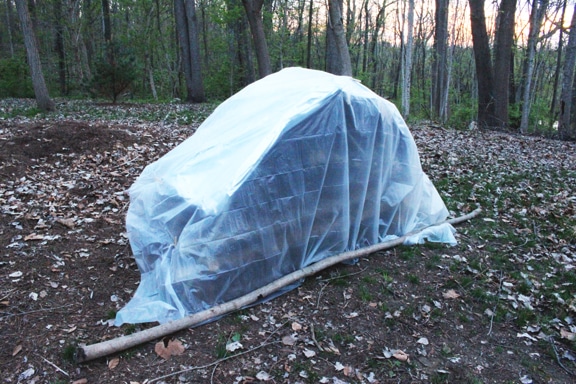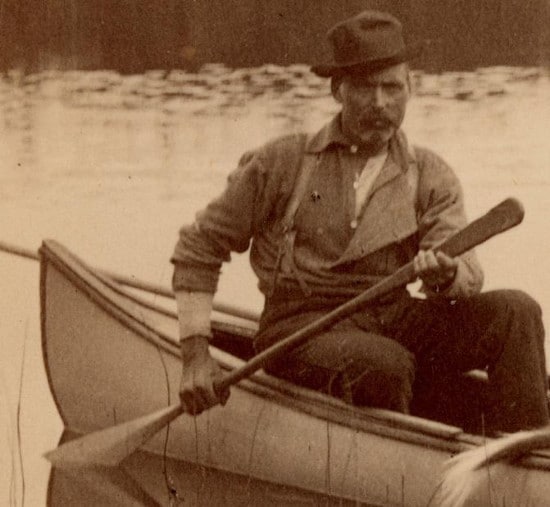
Two of the manliest men in modern literature are Aragorn and Boromir in The Lord of the Rings trilogy. I mean, who doesn’t want to be those guys (especially Aragorn)? They are capital-M Manly.
So imagine my dismay, nay, despair, when in the film version of The Fellowship of the Ring, these outstanding specimens of virility jump into their beautiful elvish canoes, grab their paddles like grain shovels, and splash off like a couple of clumsy orcs. I believe I muttered something about the director spending a few hundred bucks for canoe lessons for the actors. They get hundreds of hours of swordplay training, right? My wife leaned over and said, “Darren…it’s a movie. Get over it.”
The faux-pas of Middle-earth notwithstanding, I maintain that making a canoe go straight is a manly necessity. Imagine your sweetheart wants to go for a moonlight paddle on the local pond. There is nothing more romantic than paddling under the moonlight…unless you’re switching sides every two strokes and showering your date with a little pond water every fifteen seconds. It ruins the mood.
While paddling a canoe is often thought of as a single thing (typically, we imagine the forward stroke), there are in fact a variety of strokes within this skill-set. Today we’re going to talk about one of the most important of these: the j-stroke. If you want to make your canoe go where you want it to go, this is the sine qua non of paddling skills.
Unfortunately, it’s called the j-stroke despite the fact that it has nothing to do with the letter J, nor is it really a stroke. Sadly, someone carelessly and incorrectly observed someone paddling and said, “Great Scott, that looks like a letter J,” even though it didn’t. This mistake is replicated frequently on the internet (do a Google image search for “j-stroke” and see what I mean), which is unfortunate, especially when said internet sites should know better (Scouting Magazine, I’m talking to you).
This is the wrong way to do it. It has no basis in reality. Ignore it from now on. Forever. If it weren’t physically impossible it would be inefficient anyway. However, despite the j-stroke not being a J, bucking a hundred years of nomenclature is beyond my powers, so j-stroke it is, and j-stroke it will stay.
What this stroke cum correction really looks like is this:
So How Does It Work?
To explain the mechanics of the j-stroke, we need to understand the basics of paddle anatomy. The top grip starts things off, transitioning to the shaft, down to where the blade starts, called the shoulders. The blade finishes things off at the bottom.
There are two sides to the blade: the power face and the back face. The power face is the face where you are applying force. The back side of the blade is called the back face. Simple.
The j-stroke is a correcting move. That is, it corrects the canoe’s natural tendencies to turn, and it gets you on a correct path away from the river bank. The best way to reduce the amount of correction needed is to perform a correct forward stroke in the first place. A good forward stroke (another article for another time) is indicated by a vertical paddle shaft, which places the blade as close to the centerline of the canoe as possible (the middle of the canoe, lengthwise). The closer to the centerline, the less correction will be needed. Notice the shoulders of the paddle are shaped to follow the contour of the cross section of the canoe.
A proper stern correction starts when the paddle shaft is at or near your hips. At this point you start rotating the paddle with your top hand, the back of your hand pointing away from you, and applying pressure to the power face by pulling your top hand in a little toward the center of the boat.
Think pressure, not movement. It’s like driving a car: as you drive down the road, you don’t really turn the wheel, you just apply pressure to correct lane drift. Your passenger(s) may not even notice the corrections you’re making. If you’re having to make strong corrections, you are in a gusty crosswind or you’re driving when you shouldn’t be. Heaven forbid you’re texting.
Anyway…the path of the paddle is actually much closer to this: It’s important to note again that the back of your hand points away from the boat and you, not the other way around. The idea is to get the power face to remain such…it’s smoother and more efficient. The force you’re applying is consistent and smooth, and the power face of the paddle doesn’t change.
It’s important to note again that the back of your hand points away from the boat and you, not the other way around. The idea is to get the power face to remain such…it’s smoother and more efficient. The force you’re applying is consistent and smooth, and the power face of the paddle doesn’t change.
It is common to see paddlers do a perfectly good forward stroke but then flip the power face and the back face, the back of their hand toward them, thumb pointing up. It will get you where you are going, no doubt, but after paddling all day, the extra energy needed for that incorrect move adds up. Think of it this way: if your paddle was a tiny little Evinrude on a stick, and you wanted to correct a little, you would just turn the engine so it pointed away from the boat a little. You wouldn’t suddenly flip the paddle around and throw the engine in reverse, right? So don’t do it now.
How strong does the correction need to be?
I see people do a basic j-stroke and at the end of the stroke, crank on the paddle shaft, prying it off the gunwale, creating a lot of noise and splashing. Consider this: any effort that goes into splashing or noise is effort that could be moving you forward. Quiet paddle blades are efficient paddle blades. The answer to how strong is not as strong as you think.
Consider the basics of physics: work equals force times distance. In other words, you can use a lot of force for a little distance or a little force for a lot of distance. In the case of a canoe paddle, time can substitute for distance, since the distance is perfectly correlated with time.
What that means in English is that you can crank on the paddle for a short period of time, or just caress the water and wait for the pressure of the blade to correct the direction of the canoe. There are times when brute force is required (whitewater canoeists need to hammer it sometimes), but for putting on miles, the delicate touch is preferred. Give it time, and be patient, and you’ll be a master paddler in no time.


